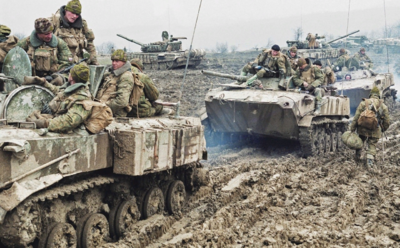Cherniyan War
| Cherniyan War | |||||||
|---|---|---|---|---|---|---|---|
 Letnian troops during the war | |||||||
| |||||||
| Belligerents | |||||||
|
Cherniya |
| ||||||
| Commanders and leaders | |||||||
|
|
| ||||||
| Strength | |||||||
|
750,000 troops (Peak) 4 million (Total) |
500,000 troops (Peak) 2.5 million (Total) | ||||||
| Casualties and losses | |||||||
|
200,000 - 400,000 killed 700,000 wounded |
300,000 - 500,000 killed 900,000 wounded | ||||||
The Cherniyan War was an armed conflict between the Kolodoria against Letnia and Cherniya. The war is generally considered to have began on 5 March 1996 when Kolodoria invaded Cherniya, and ended 7 September 2000 when Kolodoria accepted a ceasefire which led to the conclusion of hostilities. The root of the conflict lay in long held territorial disputes between Kolodoria and Cherniya, an after effect of the Northern War which had been waged over 50 years prior. The similarity to the previous conflict led several commentators to dub the conflict the "2nd Northern War", while the similiarty of equipment and weaponry used by both sides have led some commentatotors to dub the conflict the "Clone War".
Following the rise of communism in Kolodoria, Letnia had originally been supportive of Jedoria as a means of securing Letnia's southern flank, and supplied Kolodoria with military equipment. Following the Vinyan War however, Kolodorian dictator Aleksis Kraulis became convinced of Jedoria's capability to stand as a major power of it's own accord. Kolodorian success in the Vinyan War and against Vyzhva in the Vyzhvan-Kolodroian War convinced Kraulis of the capability of Kolodoria to take what it claimed by force, and starting in the early 1990s began formulating a plan of action against Cherniya, possibly driven in part by Kraulis's deteriorating mental health.
Cherniya and Kolodoria engaged in border skirmishes and clashes between 1993-1996, slowly escalating in intensity until early 1996 when Kolodoria invaded the disputed territory outright, leading Letnia to declare war on Kolodoria. Initial Kolodorian drives were met with success but Letnian reinforcements halted the Kolodorian advance. By 1997 the war had entered into a stalemate, as neither side had been prepared for a long, drawn out conflict. Despite both sides fielding large, mechanized formations centered around maneuver warfare, the fighting bogged down into attrition, set-piece offensives and battles that resulted in heavy losses for minor gains. The heavy casualties, slow progress, and defensive warfare drew many comparisons to the War of Sylvan Succession. By 1999 Kolodoria's declining economic fortunes and international isolation had begun to degrade it's ability to wage war. Starting in 2000 Letnia began pushing back Jedoria forces until the pre-war boundaries had been re-established. The death of Aleksis Kraulis in early 2000 led to a brief political crisis in Kolodoria, which eventually accepted terms of a ceasefire, thus ending the war on 7 September.
Despite massive casualties neither side gained any territory. The war bankrupted Kolodoria, and is considered the principle cause for various post-war reforms insitituted in Kolodoria. These reforms, similiar to the ones passed in Menghe and Maverica as well as the aftermath of the Polvokian Civil War are widenly considered to mark the end of hard line communism within Septentrion. Wide tracts of western Cherniya were devastated in the fighting. The exact casualties for both sides is unknown, but believed to number more than a million killed, wounded, and missing.